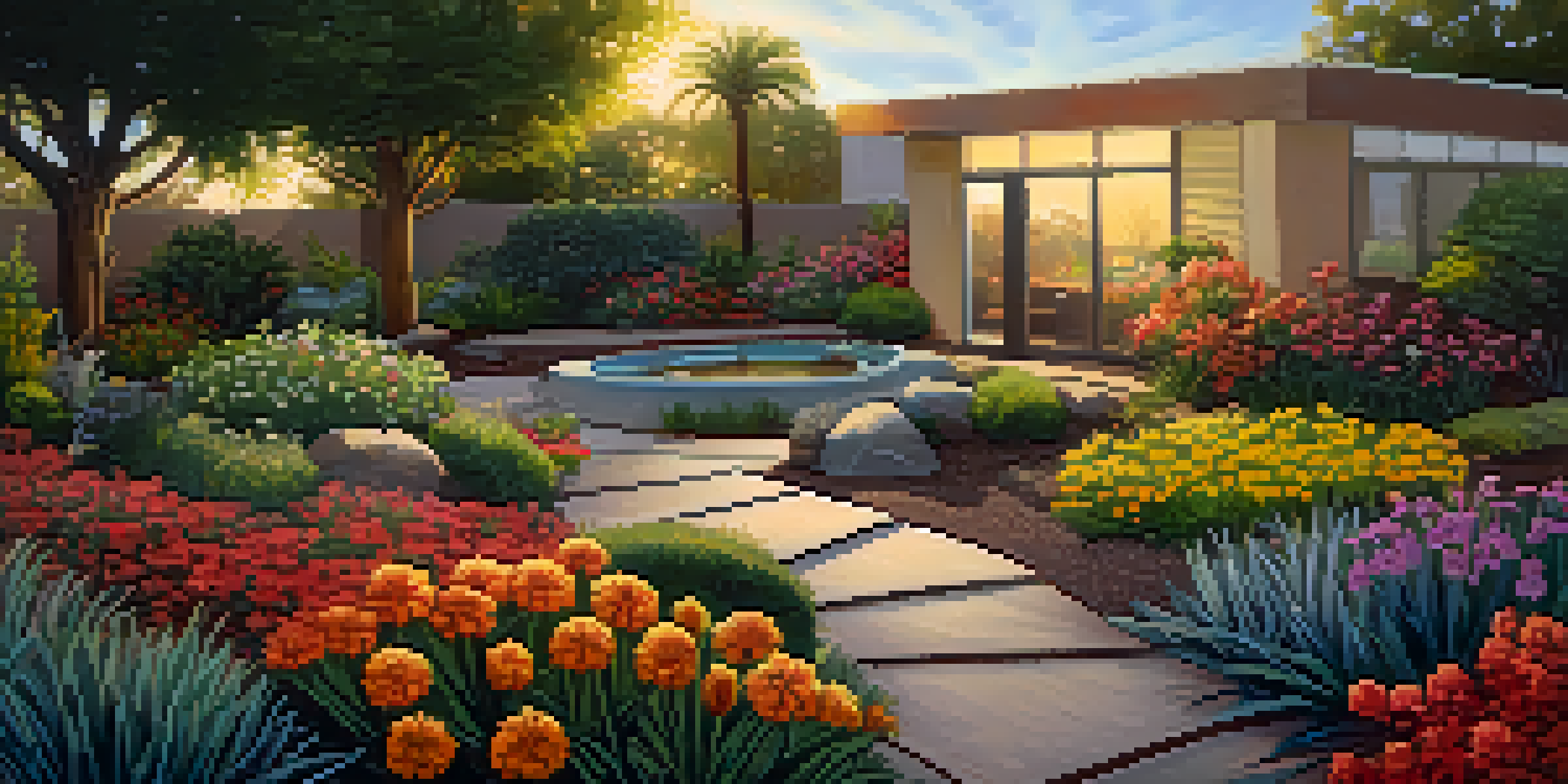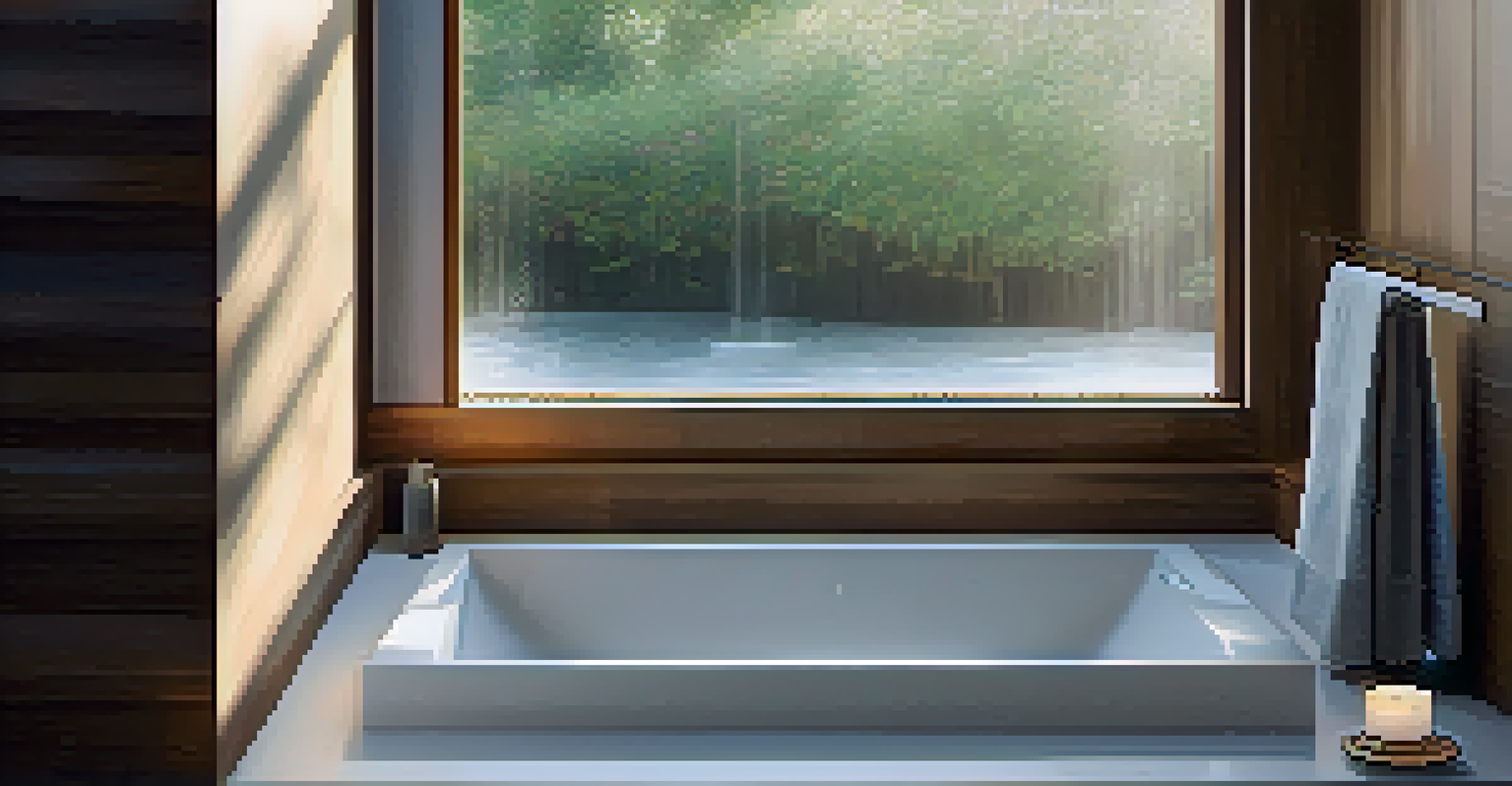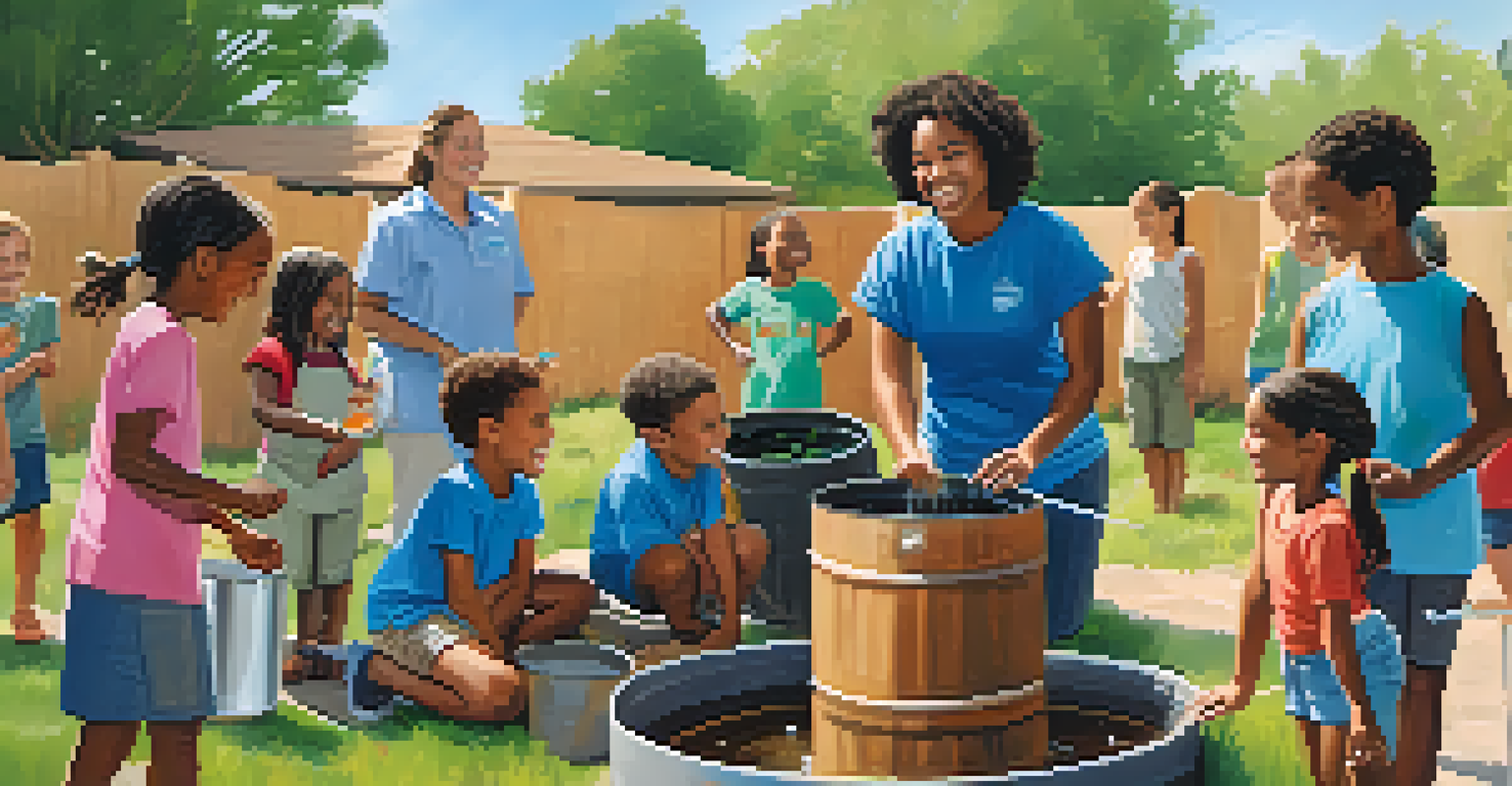Water Conservation Techniques for Every Household

Understanding the Importance of Water Conservation
Water is a precious resource, and conserving it is essential for our environment and future generations. With increasing population and climate change, water scarcity is becoming a pressing issue in many areas. By adopting water conservation techniques, households can significantly reduce their water usage and contribute to preserving this vital resource.
We never know the worth of water till the well is dry.
Moreover, conserving water not only helps the environment but also reduces utility bills. Each drop saved is money saved, which can be redirected to other important needs. This dual benefit makes water conservation a win-win situation for both your wallet and the planet.
Engaging in water-saving practices fosters a sense of responsibility and awareness about our water consumption habits. It encourages individuals and families to think critically about their usage and make necessary changes, leading to a broader cultural shift towards sustainability.
Fixing Leaks: A Simple Yet Effective Step
One of the easiest ways to conserve water at home is to fix leaks as soon as they are detected. A dripping faucet or a leaky toilet can waste gallons of water each day, adding up to significant losses over time. Regularly checking for leaks and repairing them can greatly enhance your water-saving efforts.

To identify leaks, keep an eye on your water bill; if you notice a sudden spike, it might indicate a hidden leak. Additionally, you can perform a simple test with food coloring in your toilet tank. If the color seeps into the bowl, it’s time to fix that leak.
Fixing Leaks Saves Water and Money
Repairing leaks promptly can prevent significant water waste and reduce plumbing-related expenses.
Not only does fixing leaks save water, but it also prevents further damage to your plumbing system. Over time, leaks can lead to mold growth and water damage, creating more extensive and costly repairs down the line.
Using Water-Efficient Appliances
Investing in water-efficient appliances can drastically reduce your water consumption. Look for appliances with the WaterSense label, as they are designed to use at least 20% less water than standard models. This includes items like toilets, showerheads, and dishwashers that can make a significant impact on your household's overall water usage.
Conserve water, conserve life.
In addition to saving water, these appliances often come with energy-saving features that can lower your utility bills. For example, modern washing machines use less water while effectively cleaning your clothes, striking a balance between efficiency and performance.
If you're not ready to replace your appliances, consider adding water-saving devices like faucet aerators or low-flow showerheads. These simple attachments can provide the same functionality while using less water, making conservation accessible to everyone.
Implementing Rainwater Harvesting Systems
Rainwater harvesting is an innovative way to utilize natural resources for your household needs. By collecting rainwater from your roof and storing it in barrels, you can use this water for gardening, landscaping, or even flushing toilets. This technique not only conserves treated water but also reduces stormwater runoff, benefiting the environment.
Setting up a rainwater harvesting system is relatively straightforward and can be a fun DIY project for families. All you need are rain barrels, a downspout diverter, and a few basic supplies. Once established, you’ll be amazed at how much water you can collect during a rainstorm.
Use Water-Efficient Appliances
Investing in appliances with the WaterSense label can drastically cut down water usage while lowering utility bills.
Moreover, using rainwater for outdoor tasks reduces the burden on municipal water systems, especially during dry seasons. It’s a sustainable practice that connects you more deeply with nature and encourages mindful water usage.
Practicing Smart Lawn and Garden Care
Maintaining a beautiful lawn and garden doesn’t have to mean excessive water use. Implementing smart gardening practices can help you keep your plants thriving while conserving water. For instance, choosing native plants that are adapted to your region can significantly reduce the need for irrigation.
Additionally, watering your garden in the early morning or late evening minimizes evaporation, allowing more water to reach the roots. Using mulch around plants can also help retain moisture in the soil, reducing the frequency of watering.
Lastly, consider installing a drip irrigation system, which delivers water directly to the plant's roots. This targeted approach not only conserves water but also promotes healthier plant growth, making your garden both eco-friendly and vibrant.
Shortening Showers: A Simple Change with Big Impact
One of the most effective yet simple water conservation techniques is to shorten your showers. The average shower uses about 2.1 gallons of water per minute, so reducing your shower time can lead to substantial water savings. Aim for showers that last 5-10 minutes, and you’ll notice the difference in your water bill and environmental impact.
To make this change easier, try setting a timer or playing a favorite song to keep track of your shower time. You might find that a shorter shower can be just as refreshing, and it’ll leave you feeling accomplished by contributing to water conservation.
Engage Community in Conservation
Educating others about water-saving practices can create a collective effort towards responsible water use in your community.
Furthermore, installing a low-flow showerhead can help reduce water usage without sacrificing comfort. These showerheads maintain water pressure while using less water, making them a perfect addition to any eco-conscious bathroom.
Educating Family and Friends on Water Conservation
Spreading awareness about water conservation among family and friends can amplify your efforts at home. By sharing tips and techniques, you can inspire others to adopt water-saving practices, creating a ripple effect in your community. Consider hosting a water conservation workshop or simply discussing your own experiences and successes.
Engaging children in water conservation can also instill lifelong habits. Make it a fun challenge to see who can save the most water over a week, or create a family goal to reduce water usage. This way, water conservation becomes a collective effort, reinforcing the importance of responsible water use.

Finally, being an advocate for water conservation in your neighborhood can lead to larger initiatives. Organizing community clean-up events or collaborating on local conservation projects can further promote awareness and action, creating a more sustainable environment for all.